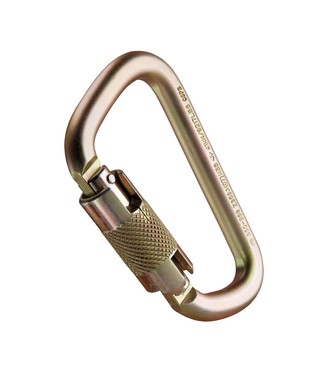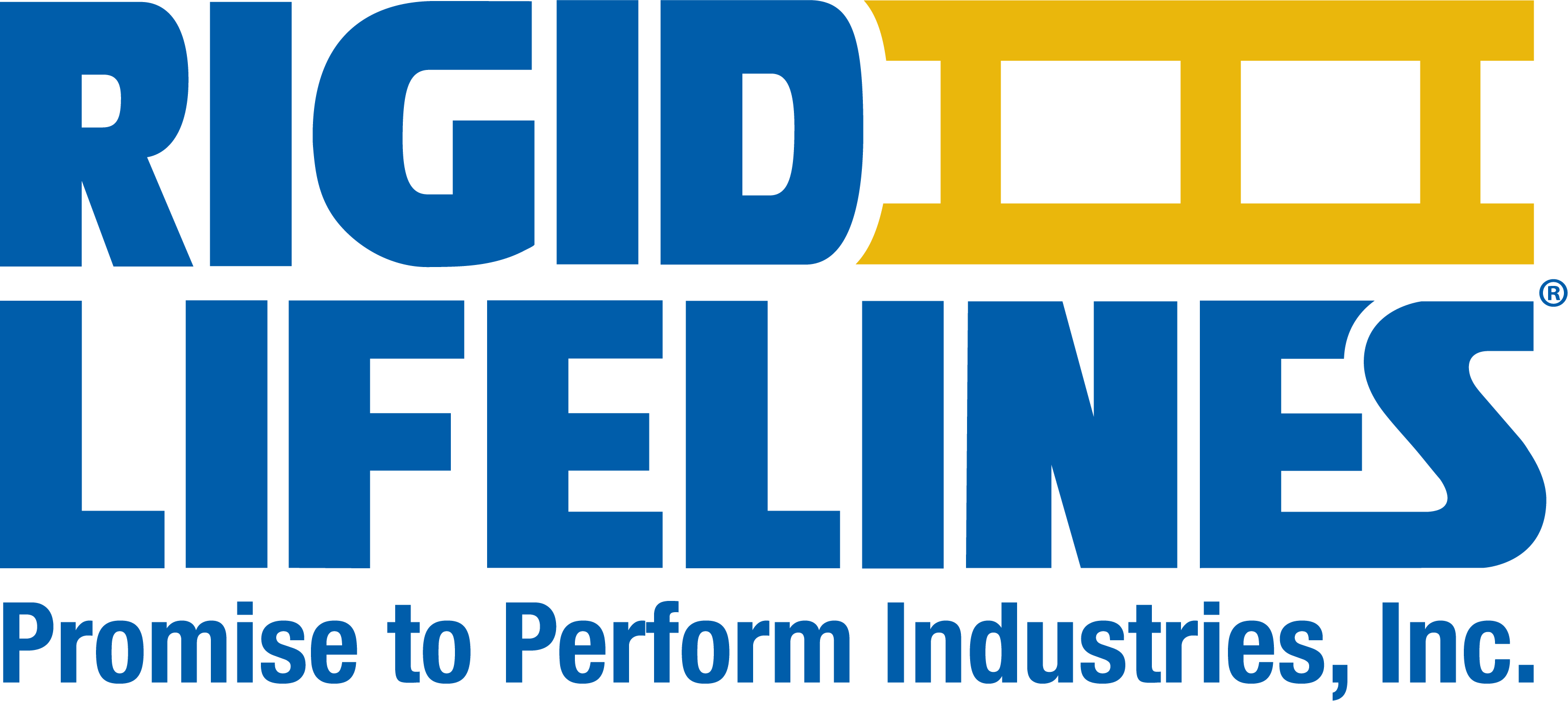
What is a Carabiner and What Role Does it Play in Fall Protection?
February 3, 2025
Fall protection systems are made up of a variety of precision components. Some, like the full-body harness or the self-retracting lanyard, have clear roles in restraining or arresting falls. Others, like the carabiner, although less focused on, are still critical to ensuring that a fall protection system functions as it should.
What is a Carabiner?
The word “carabiner” comes from the German “karabinerhaken,” which translates to English as “hook for a carbine.” In layman’s terms, a carabiner is a metal loop with a sprung or screwed gate that is used to quickly and reversibly connect components in a fall protection system.
The Role of Carabiners in Fall Protection

The Occupational Safety and Health Administration (OSHA) classifies carabiners as connectors and their role in fall protection is to ensure that the user remains connected to the system at all times. Carabiners provide a critical link between anchorage points and lanyards or lanyards and harnesses. OSHA Standard 1910.140 specifies that carabiners used in fall protection applications must be the automatic locking type and have a minimum tensile strength of 5,000 lbs (22 kN). Because carabiners endure a great deal of stress, they must be routinely inspected for signs of wear, fatigue, or damage. Their inspection requires special attention to ensure that the integrity of the locking mechanism has not been compromised.
Always make sure that carabiners used for fall protection conform to ANSI Z359 requirements.
Carabiners are an integral part of a comprehensive fall protection system. They are built to withstand extreme forces and are light so as to add minimal weight to a worker’s gear. Different tasks require different kinds of carabiners. The variables that typically distinguish styles include shape, gate type, strength, weight, and size.
Types of Carabiners
There are various types of carabiners used in the fall protection industry and they are typically defined by their shape. The most common types include the Offset-D, Oval, and Pear. Standard gate (non-locking) carabiners allow the user to push open the spring-loaded gate and place a line, strap, or other connection point within the loop. Once inside, the gate closes and cannot be opened by pressure from the opposing direction. Screw and twist-lock (locking) carabiners have an additional sleeve to secure the gate. Twist lock types may lock automatically, while screw types are threaded and must be locked manually.
Proper Use of Carabiners
A carabiner’s strength rating assumes proper use of the device. Improper use will stress the carabiner and decrease its strength. Workers should check gate action with each use to ensure smooth and proper function. Workers should be sure the nose and hinge of the carabiner operate smoothly and without obstructions.
Workers should not allow the rope to run against the sleeve of a locking carabiner. Loads should only be placed along the major axis (lengthwise). A carabiner loaded along the minor (widthwise) axis can fail in a fall.
It should be noted that gate-open strength is less than half of a carabiner’s gate-closed strength. When using non-locking carabiners, workers should avoid setups in which a rope can cross back and open a gate. With both straight- and bent-gate carabiners, a protruding nose can catch and open a gate. Locking carabiners should be used at all critical points. Workers must check that locking carabiners are properly locked with each use.
Measuring Carabiner Strength
Because a falling worker accelerates under the pull of gravity, carabiner strengths are measured in kiloNewtons (kNs), a unit of force (mass times acceleration). For conversion purposes, 1 kN is approximately equal to 225 lbs. of force. Rigid Lifelines carabiners feature are certified to meet ANSI Z359.12-2009 and CSA Z259.12-01. Each carabiner sold by Rigid Lifelines is proof load tested to 3,600 Lbs. (16kN) in the major axis. Spring-loaded twist-lock gate makes for quick connection and locking.
Carabiner Maintenance
Before each use, carabiners should be checked for signs of wear, damage, or fatigue. Locking mechanisms should be inspected to ensure smooth operation and integrity. The carabiner should be inspected visually for any signs of stress—including bending, corrosion, excessive wear, extreme temperature stress, or cracking. Damaged or worn carabiners should NOT be used.
Contact your distributor or manufacturer representative to help you select the right carabiners for your fall protection system.
Categories
Share this post
Let us help you
Contact us today to find the perfect product fit for your job
